GS4DC Advisory Board Member Hazel Ruth Edwards, Ph.D Appointed to the U.S. Commission of Fine Arts
President Joe Biden recently announced his appointment of Green Spaces for DC Advisory Board Member Hazel Ruth Edwards, Ph.D. to the Commission of Fine Arts. Since July 2016, Dr. Edwards has served as Professor and Chair of the Department of Architecture at Howard University’s College of Engineering Architecture — the first female to hold the post.
Her career has combined place-based research with planning and urban design practice and teaching. She is a certified planner with the American Institute of Certified Planners (AICP) and was elected to their College of Fellows (FAICP) in 2018.
The U.S. Commission of Fine Arts (CFA) is an independent federal agency established by Congress in 1901 to advise the federal government on “matters of design and aesthetics, as they affect the federal interest and preserve the dignity of the nation’s capital,” according to CFA’s website.
Green Spaces for DC congratulates Dr. Hazel Ruth Edwards on this momentous achievement.
Photo from UCSD Design Lab.
Blog Post: Parks are a natural defense mechanism against the normalizing heat waves
Low-income communities in the District already face hotter temperatures and greater risk to heat-related illnesses. With the hottest temperatures yet to come, the need for investment into the District’s parks and green spaces couldn’t be clearer.
BY JORDAN MULLANEY
The scorching hot temperatures experienced in June 2021 shattered records in cities and states across North America. Wildfires sparked, pavement buckling, power lines melting, and hundreds of deaths attributed to the historic heatwave in the Pacific Northwest and Canada.
While the District was left unscathed with near-average temperatures in June, Washingtonians should brace for the hottest temperatures yet to come. As many Americans are awakened through first-hand experiences of the catastrophic effects of the climate emergency, we’re reminded of the central role parks and green spaces play in keeping cities cool amidst the heat waves.
Urban areas experience what’s known as the “heat island effect” -- when dense concentrations of pavement, buildings, and other built surfaces absorb and radiate heat, causing temperatures to climb as much as 22°F warmer than neighboring rural areas. Unsurprisingly, summer heatwaves intensify this effect and create life-threatening conditions for at-risk or senior populations. Not to mention, you can expect increased reliance on cooling systems that overload power grids and increase CO2 emissions.
Parks as a Solution
Trees and vegetation are natural guardians against urban heat islands. Whether it’s a pocket park, street tree, or soccer field, green spaces stay cooler than the built environment. Countering the effect of the artificial temperatures in cities, green spaces cool the air through both shading and evapotranspiration -- the movement of water from the plant to vapor in the atmosphere.
Increased coverage of green spaces not only makes the District more livable, but also more survivable. As temperatures continue to break records, healthy trees and vegetation in open spaces prove themselves as invaluable defense mechanisms against an intensifying climate emergency.
Is the District Prepared?
Washington, DC set a goal for 40% healthy tree canopy coverage by 2032. Yet, a tug-of-war ensues, with the fear of stunting the District’s growth and development in place of a growing tree population, which funnels money into the economy, alongside concrete and increased energy consumption and costs.
According to the Trust for Public Land’s 2021 ParkScore, low-income communities actually have access to 50% more park space than the city median, and 9% more than those in high-income areas.
Despite the findings, the heat island effect is more severe in low-income neighborhoods, which cannot be overlooked. Discriminatory housing practices through redlining policies shaped these disparities as they left communities astray, without investment into cooling infrastructures like tree canopies of higher-income areas.
D.C.’s historically underserved African-American communities face extreme heat, where residents are more at risk of heat-related illnesses. Within the boundaries of the District itself, studies have shown temperatures differences ranging from 16°F between the hottest and coolest neighborhoods. D.C. Policy Center identified the neighborhoods at highest risk of heatstroke or heat-related illnesses include those of Buzzard Point, Edgewood, and Washington Highlands. The interactive map clearly highlights the disparities of the District’s east and west quadrants, with a particular need in Wards 7 and 8.
Extreme heat can longer be written off as a minor annoyance. The history and data supporting D.C.’s disparities facing extreme heat conditions must be used as a roadmap in preparing for the oppressing environments to come in this climate emergency.
Parks, green spaces, tree canopies, and vegetation, are the natural solutions to urban heat islands, and their ancillary benefits of cleaning surrounding air, improving water quality, and trapping pollutants (not to mention their mental health benefits, too), make them a no-brainer for the types of investment the District should be prioritizing.
With rising temperatures to come, transforming asphalt into cool, green city parks matters more than ever -- and might even be the matter of life and death.
Jordan Mullaney, Communications & Social Media Liasion, Green Spaces for DC
Partner Highlight: Eckington Parks & Arts
When Alethia Tanner Park began welcoming visitors in June 2020, demand couldn’t have been higher. Learn how Eckington Parks & Arts (EP&A) became a community force, with ambitions to build lifelong stewards and advocate for public space in a neighborhood that lacks access to greenery.
When Alethia Tanner Park began welcoming visitors in June 2020, demand couldn’t have been higher. Learn how Eckington Parks & Arts (EP&A) became a community force, with ambitions to build lifelong stewards and advocate for public space in a neighborhood that lacks access to greenery.
In June 2019, a few dozen Eckington residents came together with a vision for a neighborhood with better access to greenery and a culture of stewardship toward public space.
Today, Eckington Parks & Arts (E&PA) is a community organization that boasts a dedicated board and a voting membership body that donate their time, money, and passions to advocate and improve the green spaces in the Northeast neighborhood.
“Northeast D.C. really doesn’t have many green spaces,” says President of Eckington Parks & Arts Shoshana Sommer, “We have significantly fewer mature trees, we’re a heat sink with a huge amount of pavement, and not enough green buffer strips in our neighborhoods.”
That’s why, amidst a year of citywide clamoring for outdoor space and the opening of Alethia Tanner Park in June 2020, EP&A’s ascent couldn’t have come at a better time. The organization directs much of its resources toward maintaining the dog park and advocating for Tanner Park and other green spaces, all of which have experienced high volumes of use during the pandemic.
When District street cleaning services were suspended due to COVID-19, E&PA commissioned their volunteer force to host bimonthly cleanup events on first and third Saturdays.
“With a little less support from city services, trash and bulk waste built up in the neighborhood. We were able to take some of the frustrations of that but turn it into something positive,” said Sommer. Voicing their concerns publicly, they contacted representatives, organized letter-writing campaigns, and provided testimony at a District Council meeting advocating for more resources to clean up public spaces.
But encouraging safe and proper use of the dog park is a primary focus of the organization’s work. Without funding from the District, E&PA is responsible for its day-to-day maintenance, relying on donations from park users that go toward turf cleanings, waste bags, and signage with friendly reminders of rules and ways to get involved.
Sommer, who brings her Australian shepherd Zahvi to the dog park on a weekly basis, said, “It’s created a lot of community and opportunity to see people outside in a safe way during the pandemic.”
Now as the District reopens and emerges from COVID-19, E&PA is venturing into programming. Through the warmer months, the organization will host a yoga series and recurring storytime in the park. They will even be partnering with a local art studio to offer tours and DC Library to host book bike visits. Events are open to the public with priority RSVPs for EP&A members.
“We’re able to help advocate and give people the opportunity to come together for our neighborhood, and have a more powerful voice that way,” said Sommer.
As a partner organization of Green Spaces for DC, Eckington Parks & Arts is part of a larger citywide movement for equitable access to parks and open spaces. “We see what Green Spaces’ efforts to increase, promote, and support public spaces look like and find our own ways to work on a smaller scale for our neighborhood, said Sommer.
“Our involvement also gives us an opportunity, as a Northeast parks association, to have some input into a D.C.-wide organization.”
Learn more about Eckington Parks & Arts by visiting https://eckingtonparks.com/ and learn more about becoming a “Friend” here.
Thank you for a great 2019 Meet+Greet!
Thank You to everyone who managed the July heat to be with us for the 5th Annual Green Spaces for DC Meet + Greet Event. For those who made it, you were rewarded with good food and great conversation with a magical sunset over the Anacostia River and the poetry of Melanie Choukas-Bradley embracing the splendors of our earth.
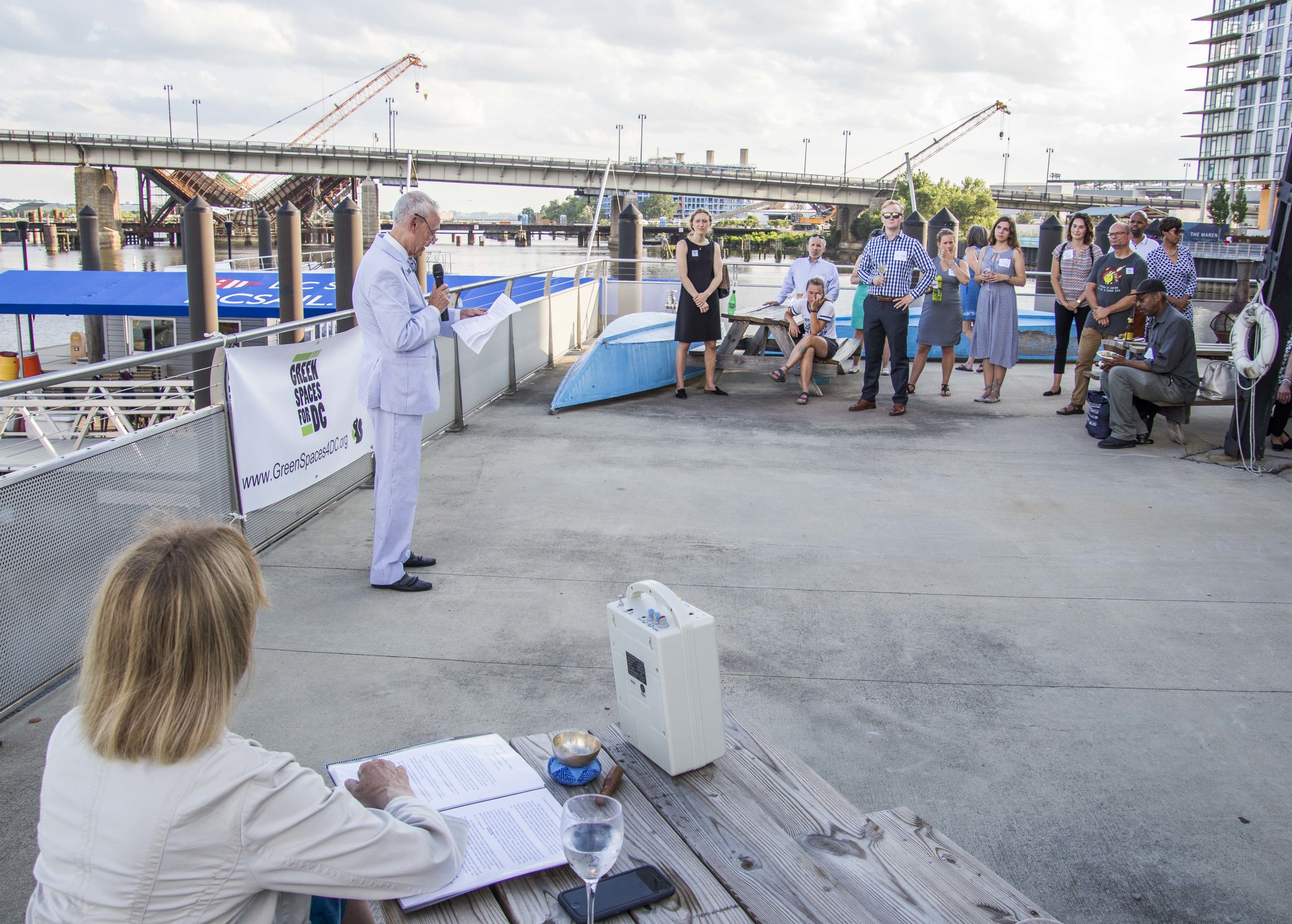

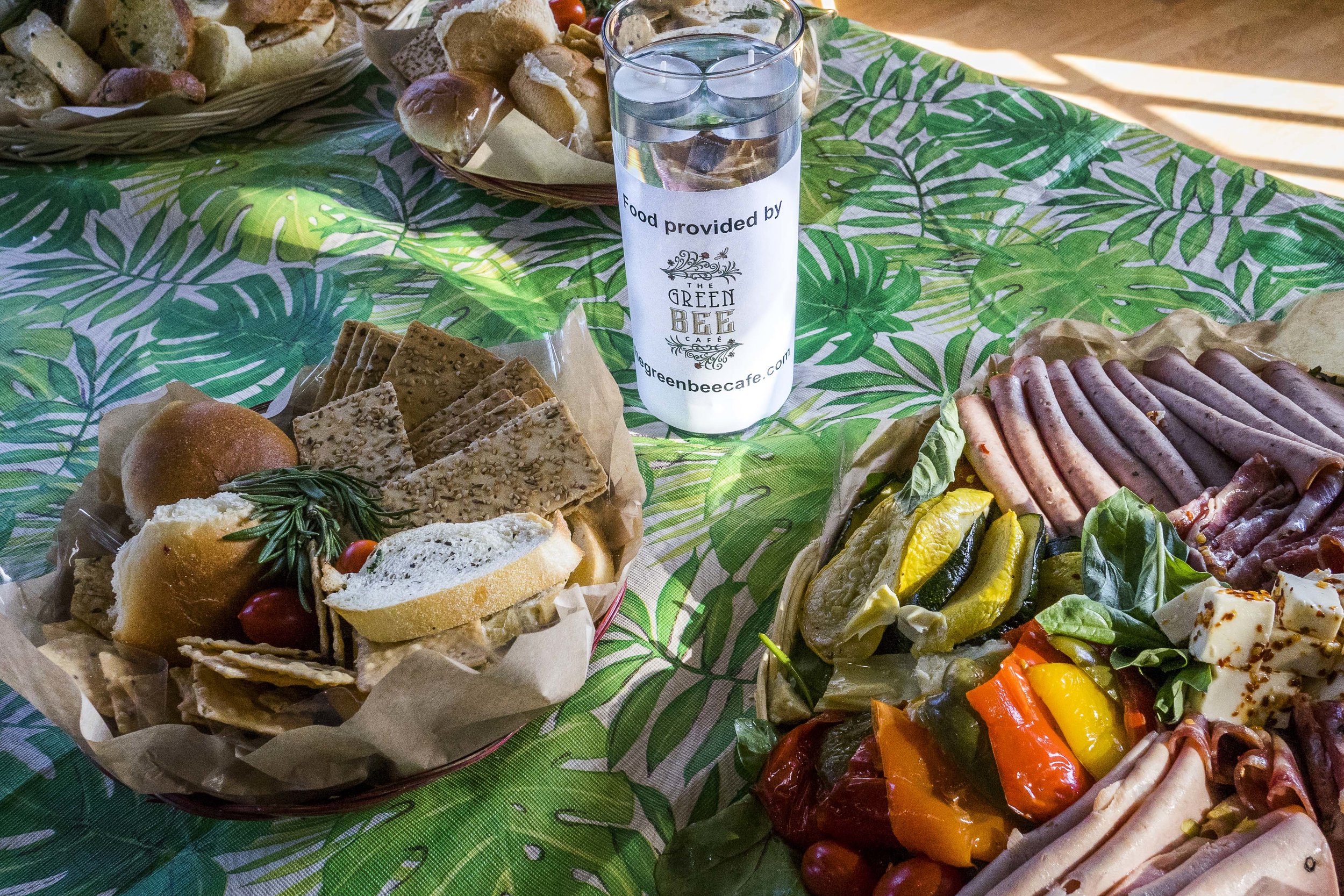
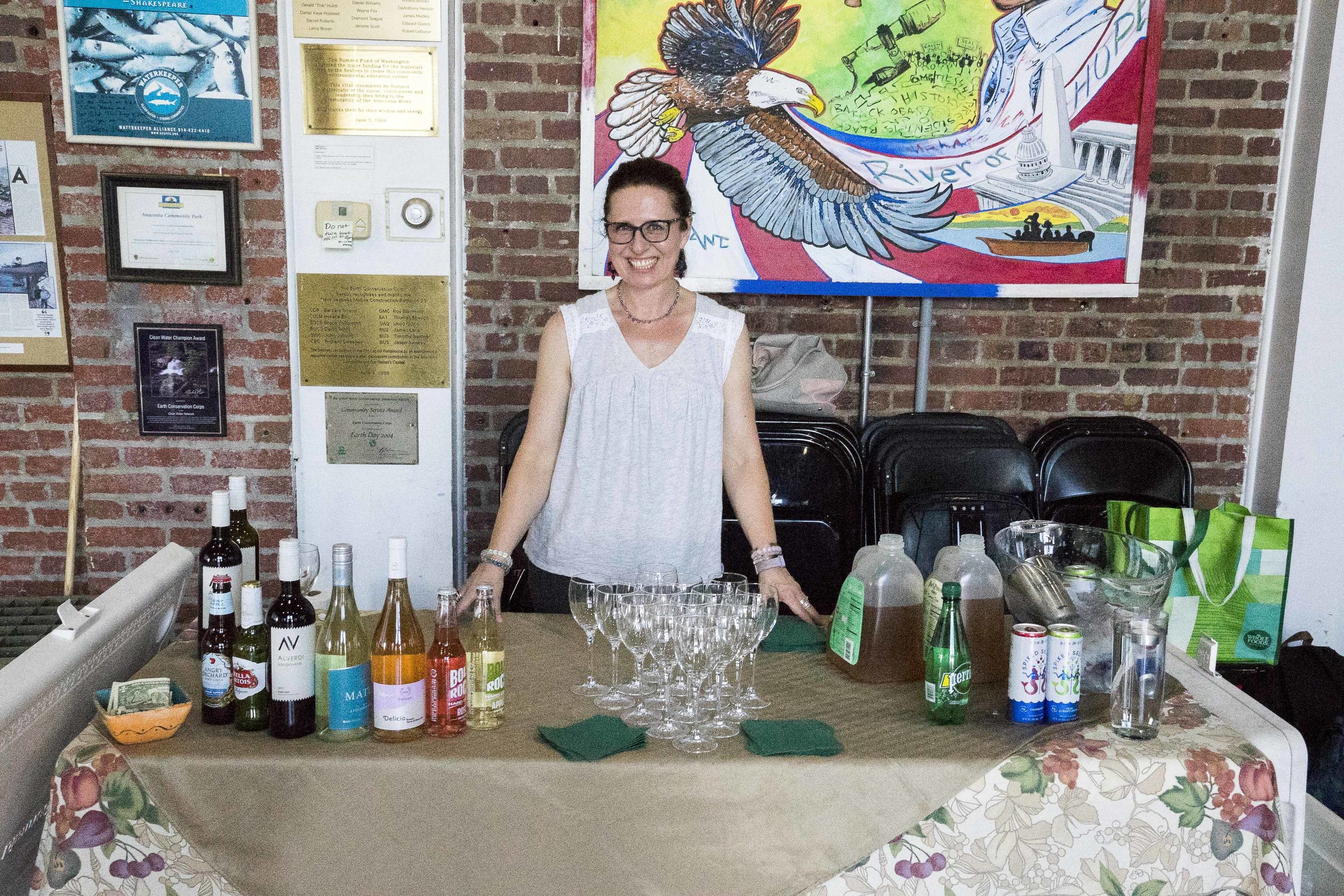
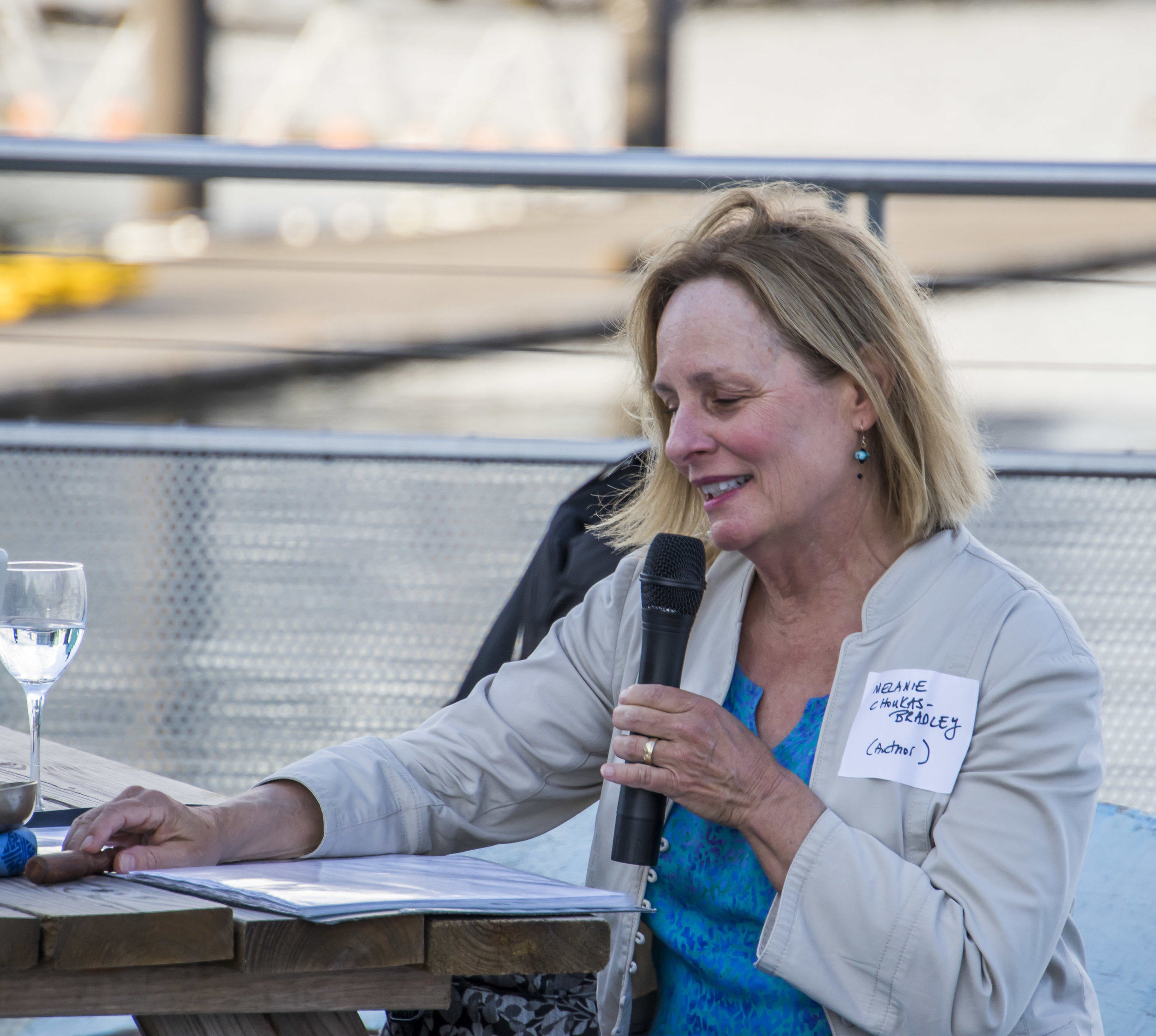
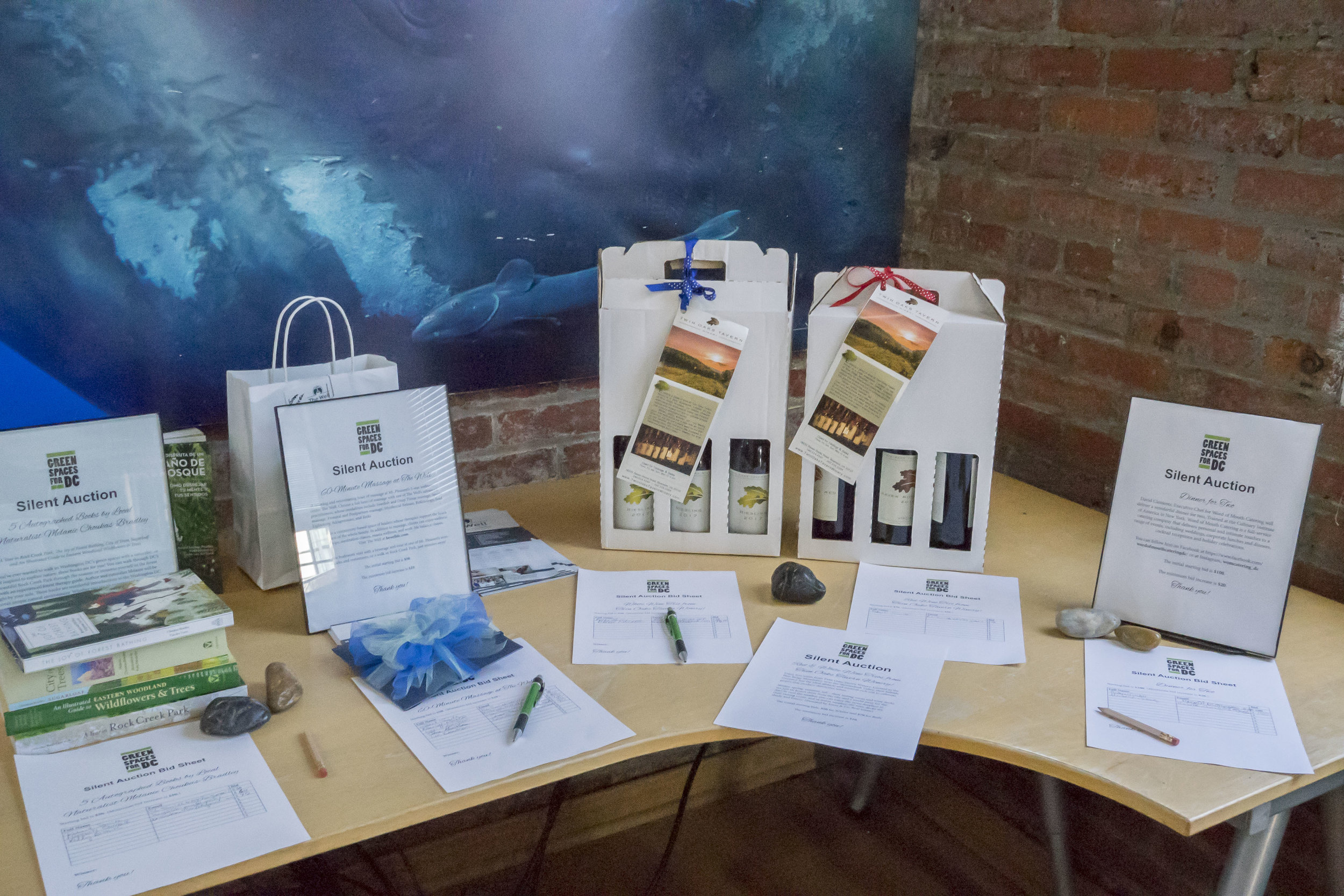
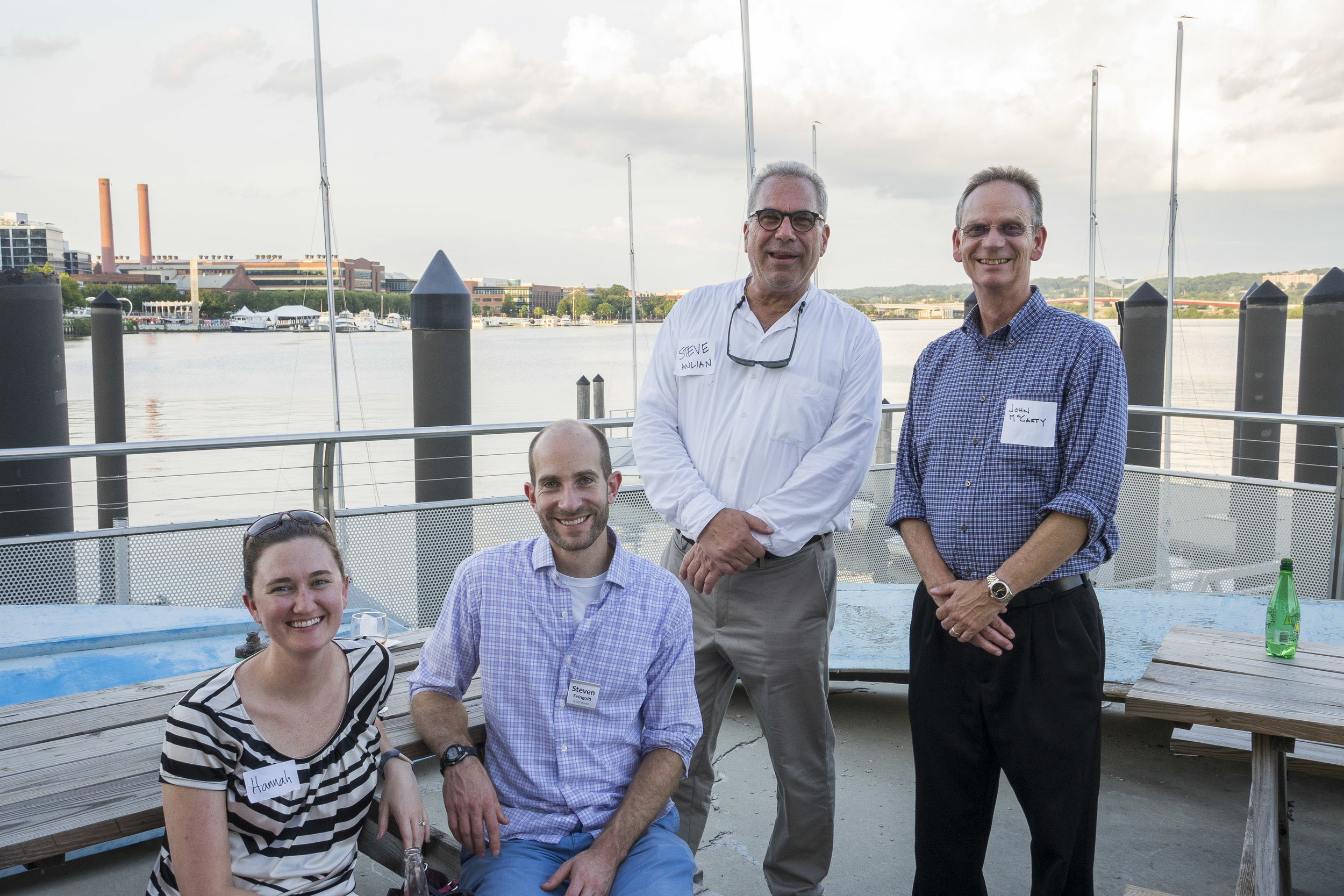


Photos by Ana Ka'ahanui
Thank you to everyone who managed the July heat to be with us for the 5th Annual Green Spaces for DC Meet + Greet Event. Those who made it were rewarded with good food and great conversation with a magical sunset over the Anacostia River and the poetry of Melanie Choukas-Bradley embracing the splendors of our earth.
It was wonderful and heartwarming to connect with so many supporters and partners. Special thanks to Melanie, author of The Joy of Forest Bathing, City of Trees and A Year in Rock Creek Park, all donated to the event’s Silent Auction, and to our many other sponsors, including the Earth Conservation Corps for providing the space for this venue for the past five years. Other sponsors and Silent Auction Sponsors include:
Accenture
Green Bee Café
A. Charles Photography
A Few Cool Hardware Stores (Logan Hardware)
Patagonia
Pottery by Nance Gillette
Sam Dixon
The Well
Twin Oaks Tavern Winery (Evers & Co, Real Estate)
Word of Mouth Catering
Remember that we are an all-volunteer effort. Every penny we raise goes to support the hometown DC green spaces organizations we sponsor. If you care about what we do and have the wherewithal, please make an online donation. Thanks to all those who already given — we can’t survive without you!
See you next year, if not before. -- John Henderson, President - Carol Truppi, Chair
D.C.’s Parks to Receive More Support Following Approval of Federal Lands Package
From WAMU: D.C. contains almost 7,000 acres of land controlled by the National Park Service, and up until now, the federal agency was charged with maintaining all of it, including the majority of the city’s neighborhood parks.
From WAMU:
D.C. contains almost 7,000 acres of land controlled by the National Park Service, and up until now, the federal agency was charged with maintaining all of it, including the majority of the city’s neighborhood parks.
That changed with the passage of a federal lands package, signed on Tuesday by President Donald Trump, that includes a law allowing the District to rehabilitate, operate, and maintain NPS properties in the city.
“The National Park Service owns nearly all of D.C.’s neighborhood parks, which makes this bill critical to the District,” D.C. Delegate Eleanor Holmes Norton said in a statement. “Congress never adequately funds the nation’s many federal parks. Considering that our neighborhood parks, though most are NPS controlled, are central to neighborhood life and enjoyment, this bill will allow the city to tap local and private funds to help renew our precious parks.”
Rock Creek Park Day
On a beautiful sunny day on September 29th, 2018, Green Spaces for DC participated in the activities of Rock Creek Park Day, where board members and volunteers helped to man the booth and participate in some of the day’s activities.
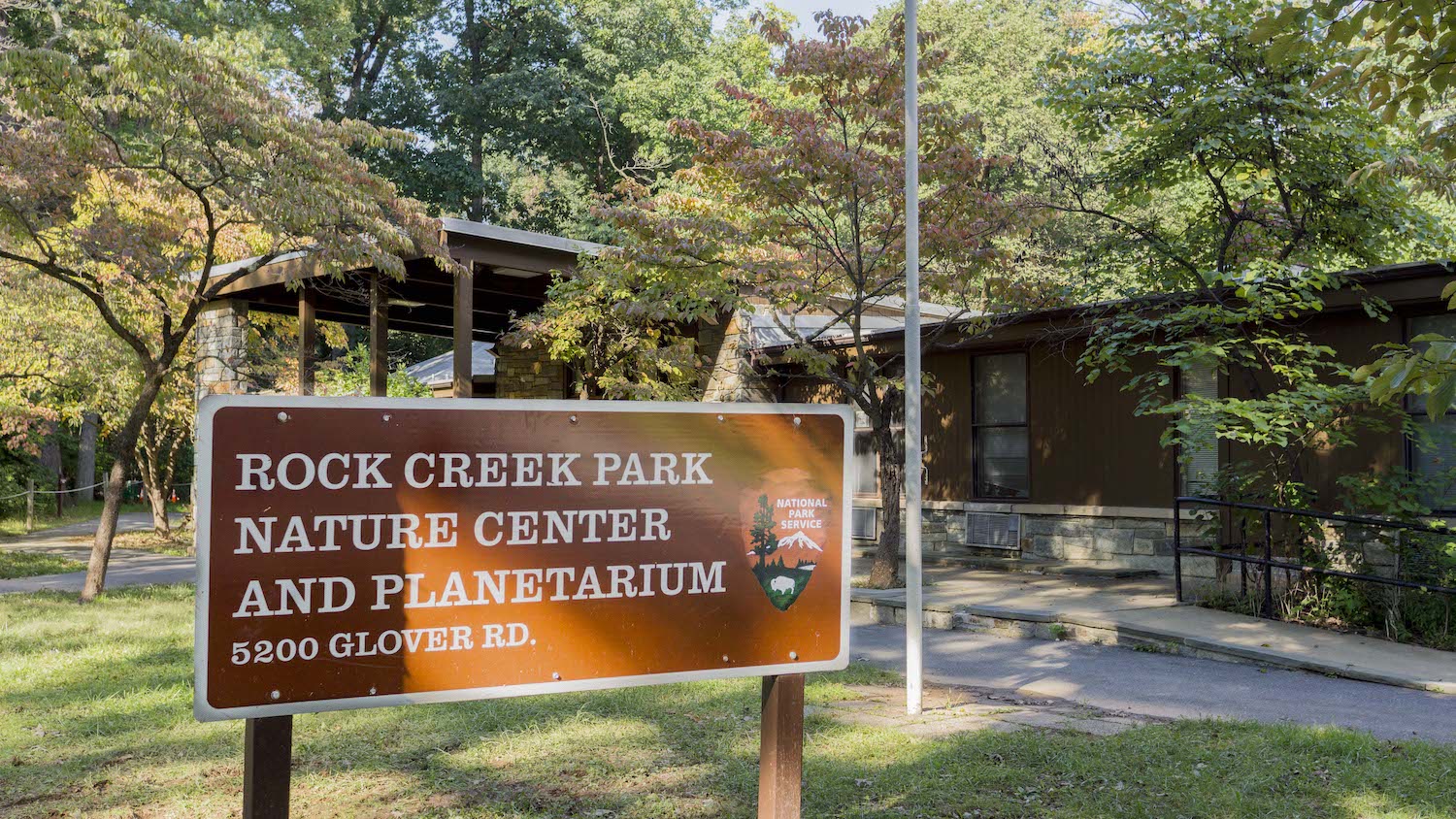

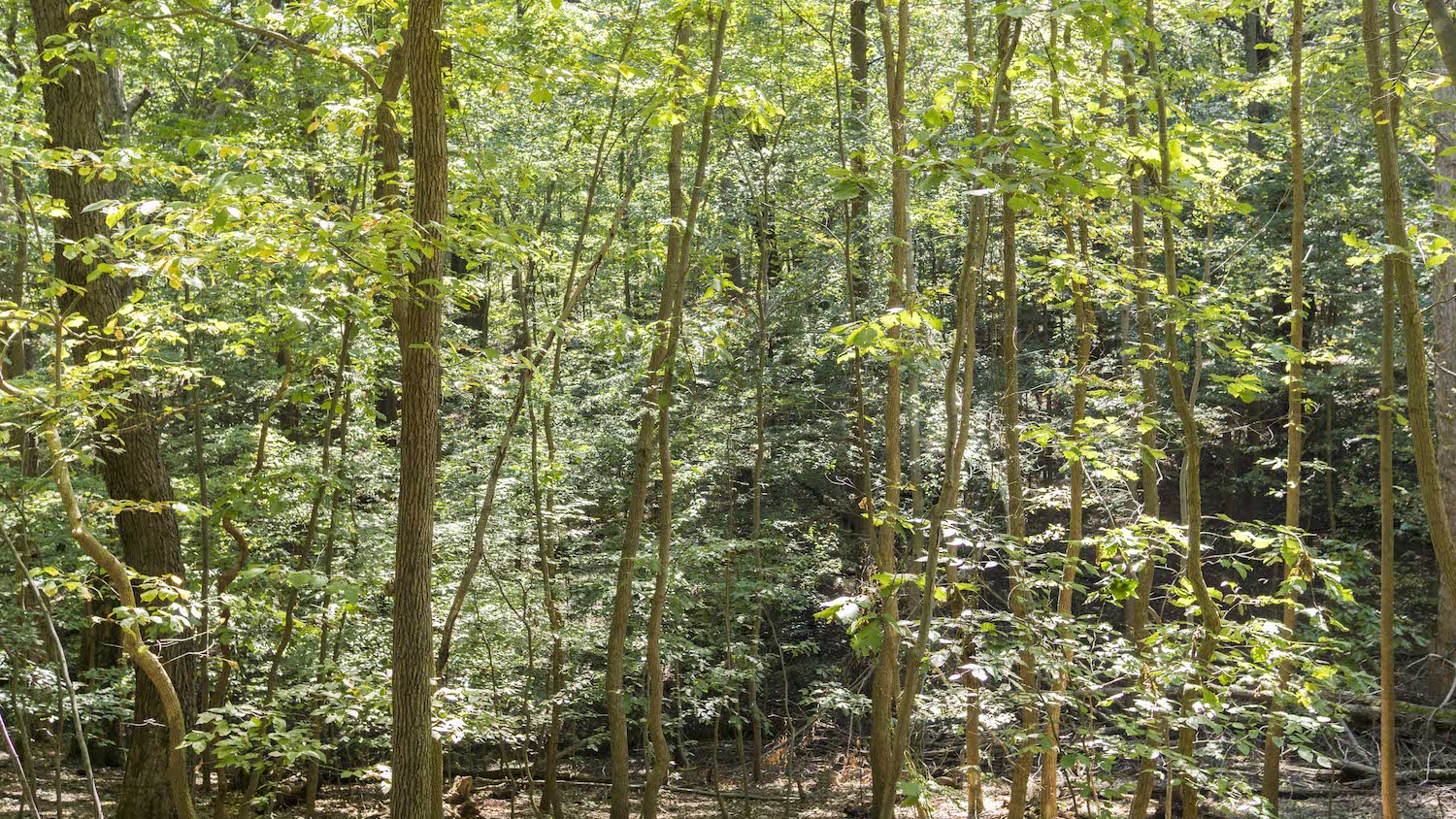
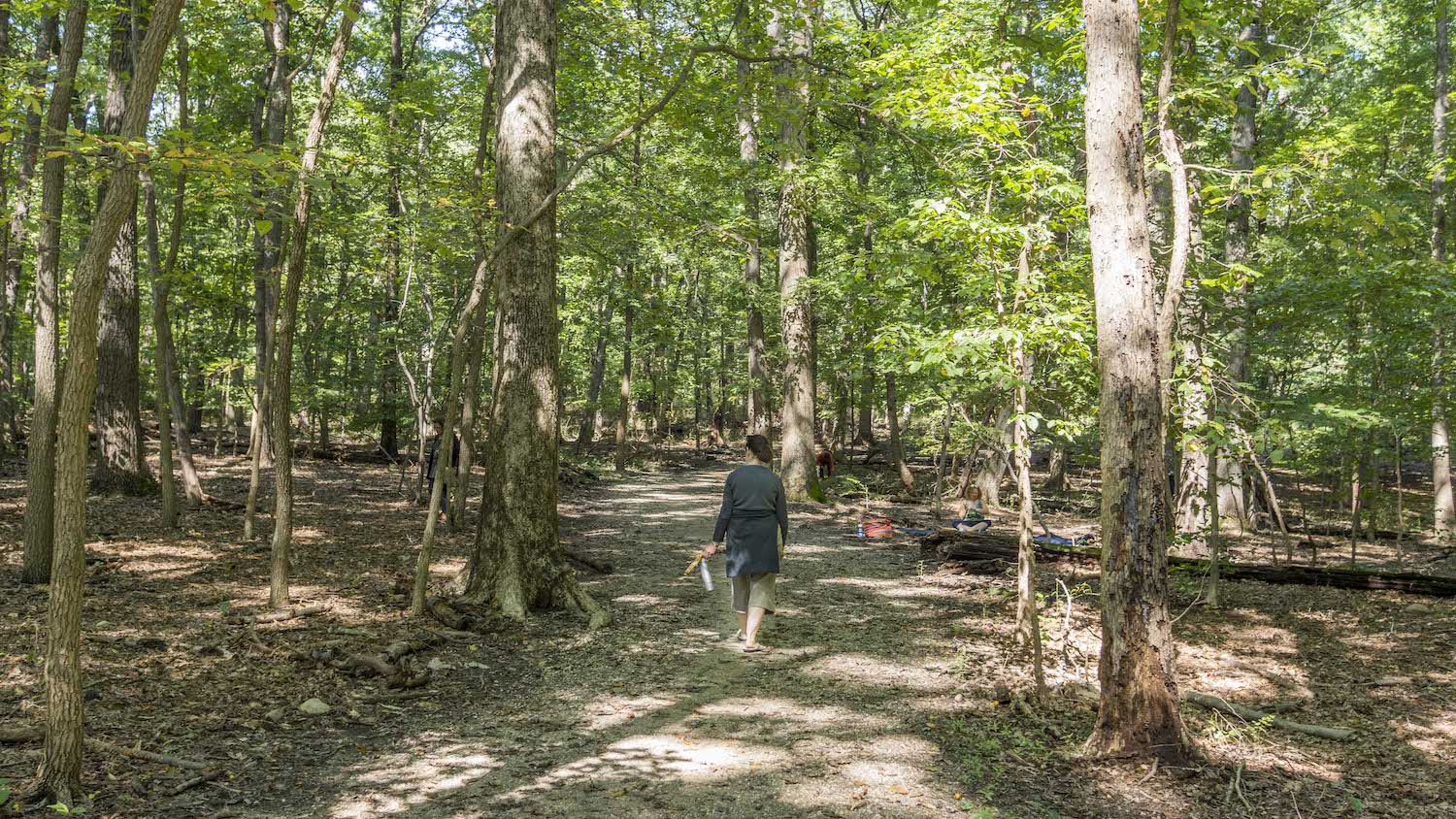
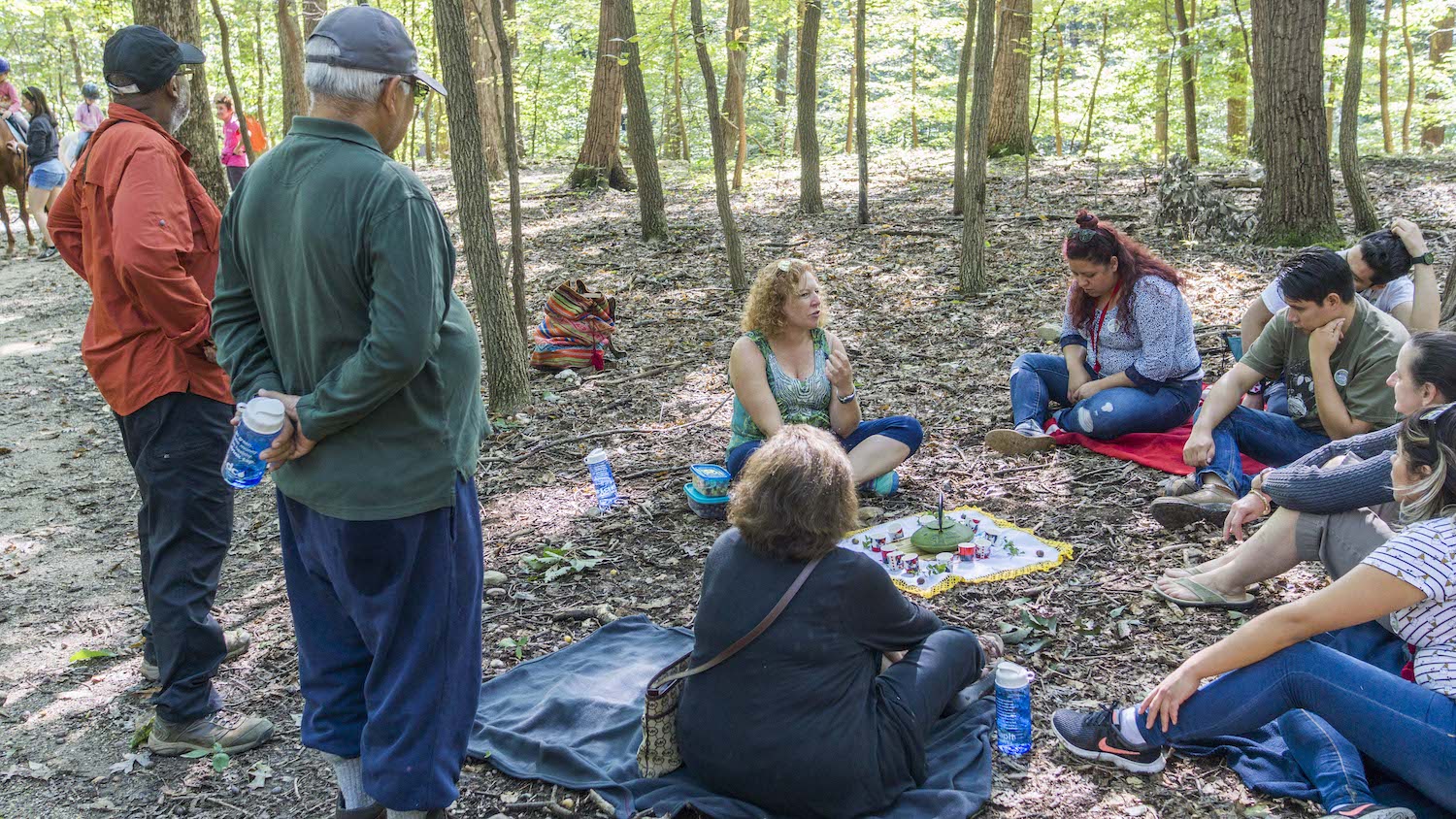
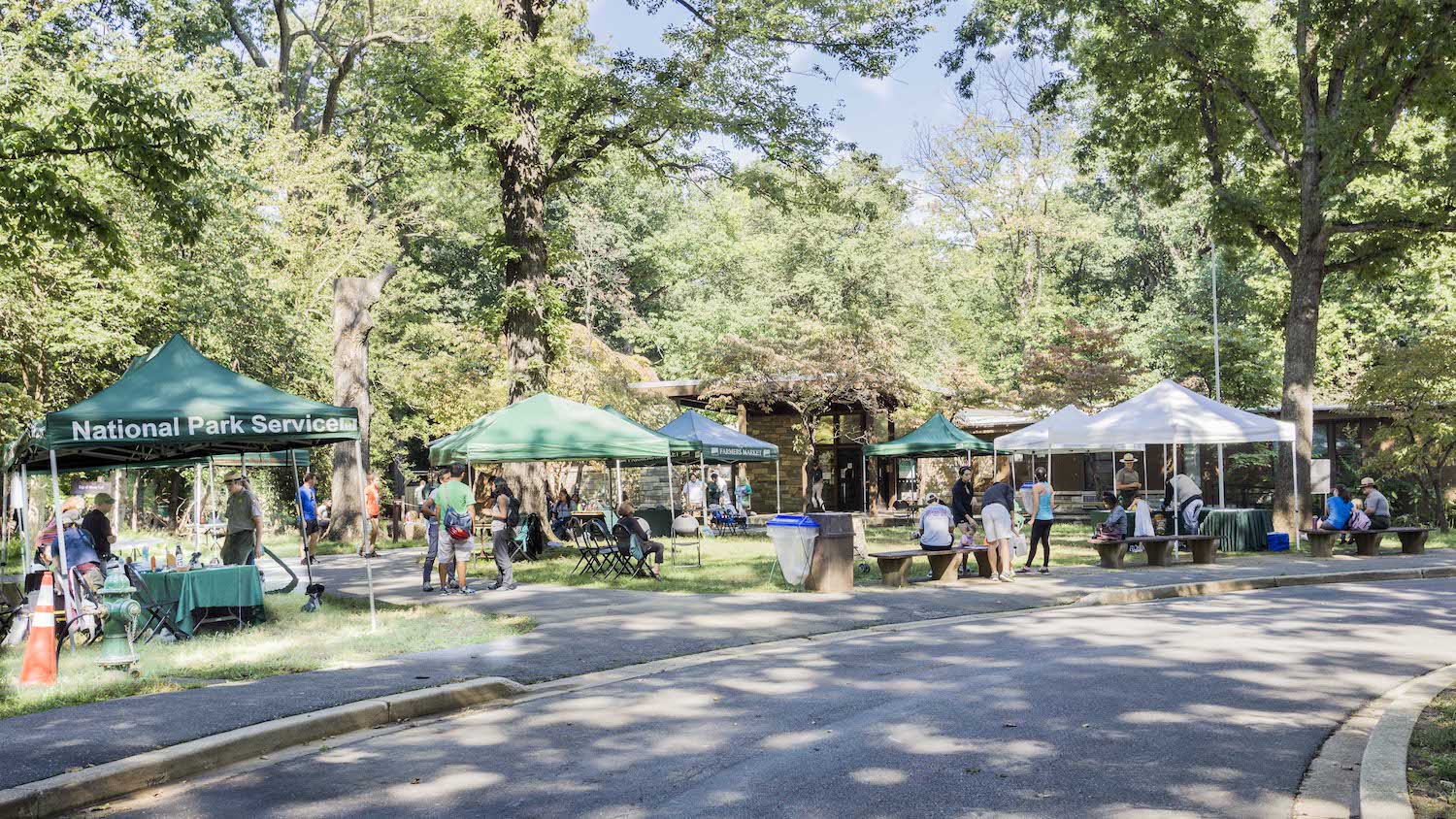
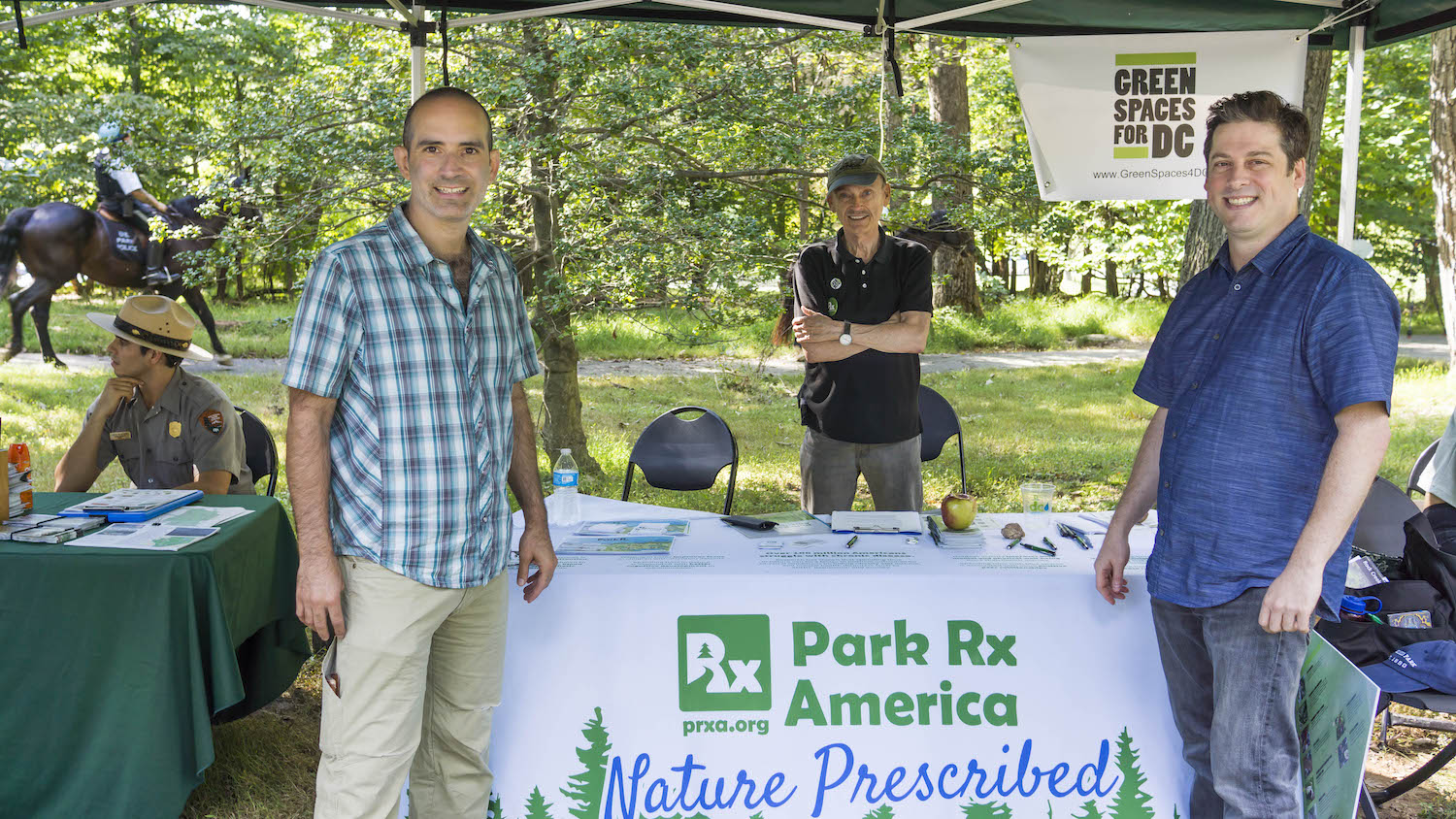
On a beautiful sunny September 29, 2018, Green Spaces for DC sponsored a series of walks while ParkRx America and other community groups participated in Rock Creek Park Day on the grounds of the Rock Creek Park Nature Center. Board members and volunteers helped to man a booth, explain to visitors about our friend and partner organizations, record numbers of participants in the day’s events and join in some of the activities. One was a bird walk, led by U.S. National Park Service Ranger Anthony Linforth. The group was introduced to birding with a lesson in binocular use, then led into the park where they learned about listening and looking for birds. Among the species spotted and identified on the walk were a red-bellied woodpecker, a turkey vulture, a cardinal, a blue jay and a robin. A migrating flock of raptors presented another lesson when the ranger was able to identify numerous hawks and a juvenile bald eagle.
The day also featured Forest Bathing, a meditative nature walk led by trained guide Toby Bloom. She explained how the practice of shinrin-yoku originated in Japan in the 1980s as a stress-reliever for overworked urban employees suffering declining health from constantly being indoors and under too much pressure. Forest Bathing encourages walkers in nature to slow their pace, carefully observe, touch and listen to the plants and objects, textures and sounds around them — and to share their thoughts about what they’re experiencing along the way. The unique wander in Rock Creek Park ended with a simple seated tea ceremony and snacks as the walkers exchanged ideas about how the walk altered their awareness of nature.
Thank you for a great Meet+Greet!
A big Thank You to everyone who battled through the chaos around Nationals Park to be with us for the 4th Annual Green Spaces for DC Meet+Greet. For those who made it, you were rewarded with good food and great conversation. We even experienced a magical sunset over Anacostia.
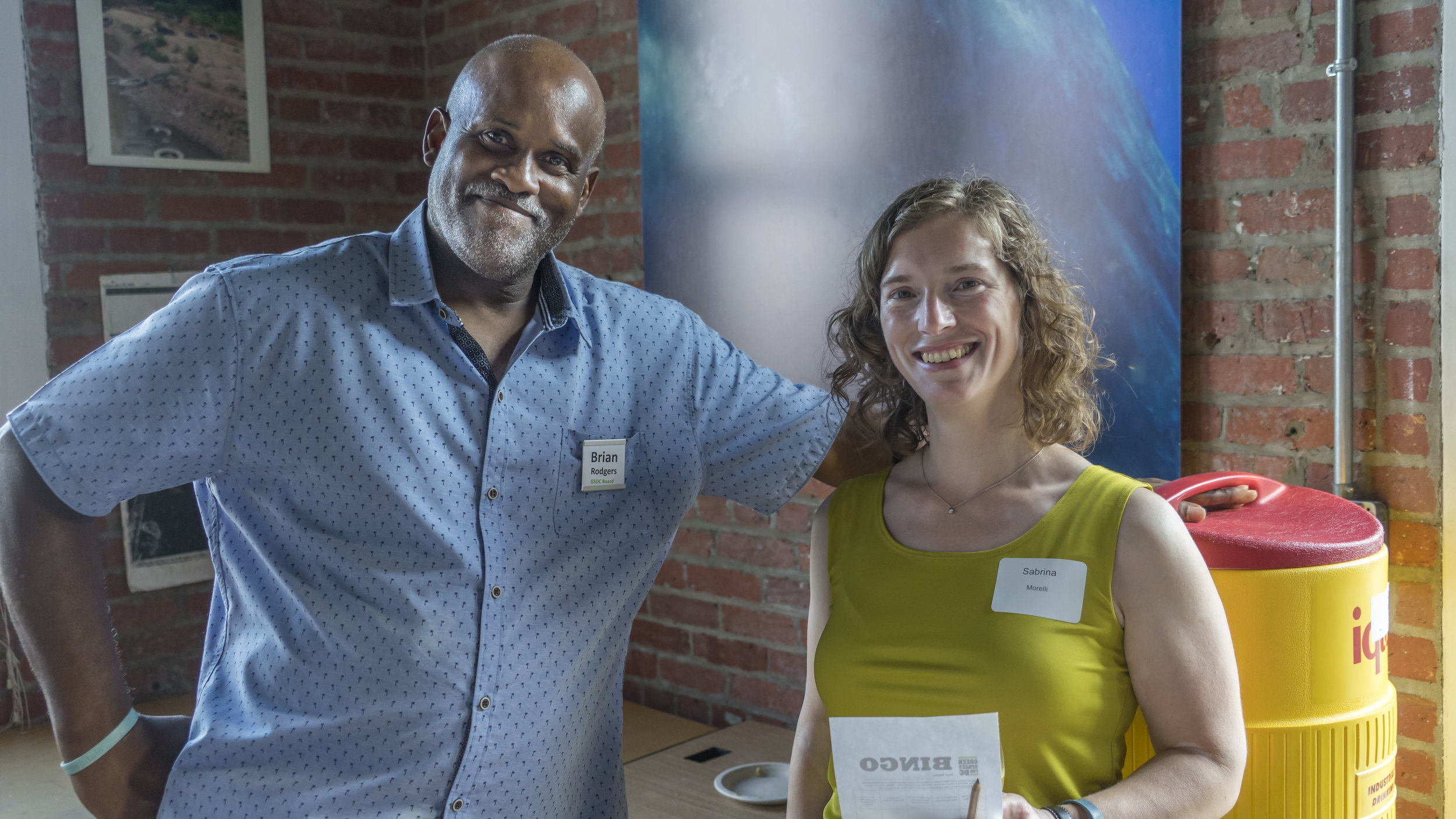

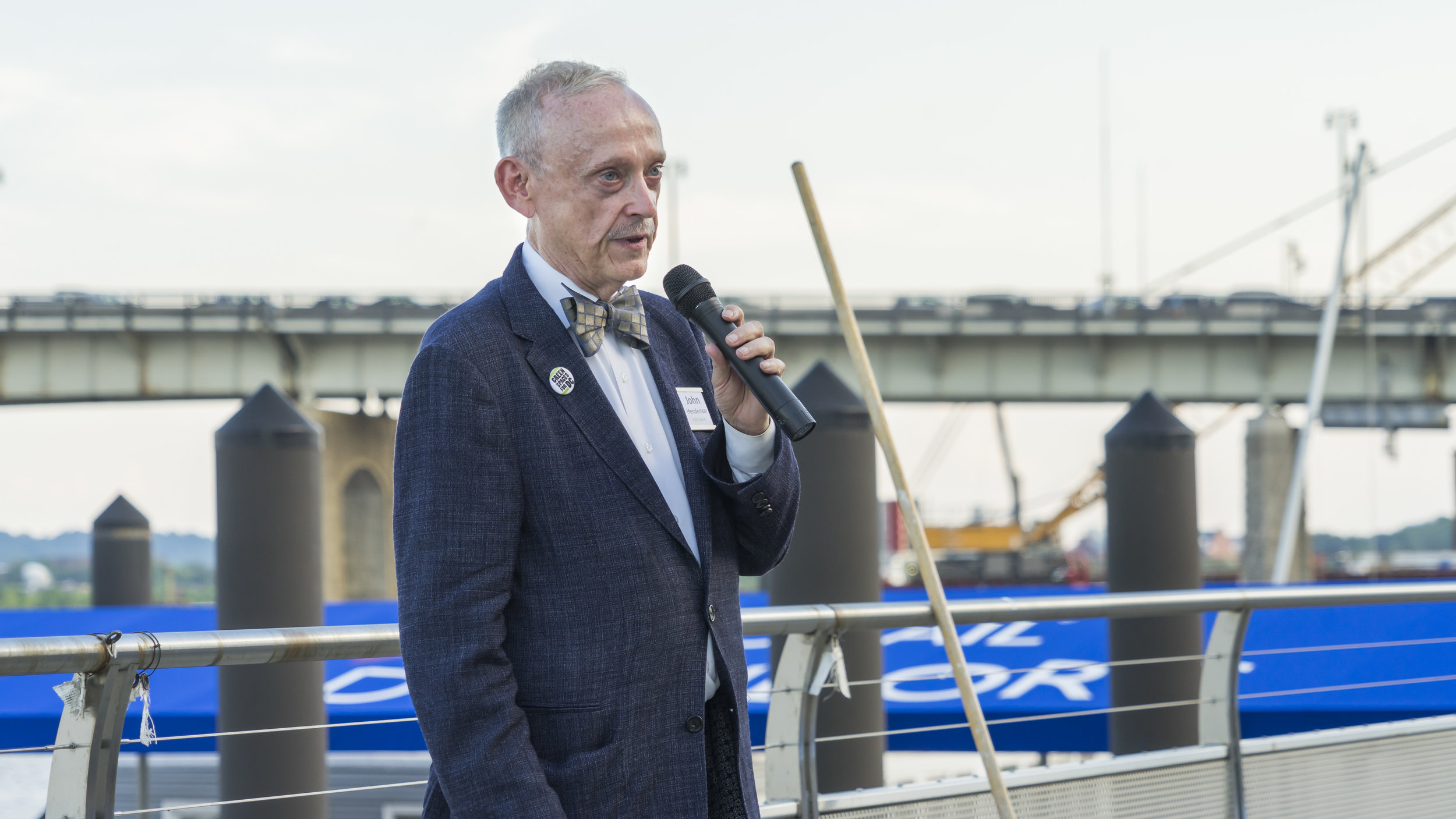
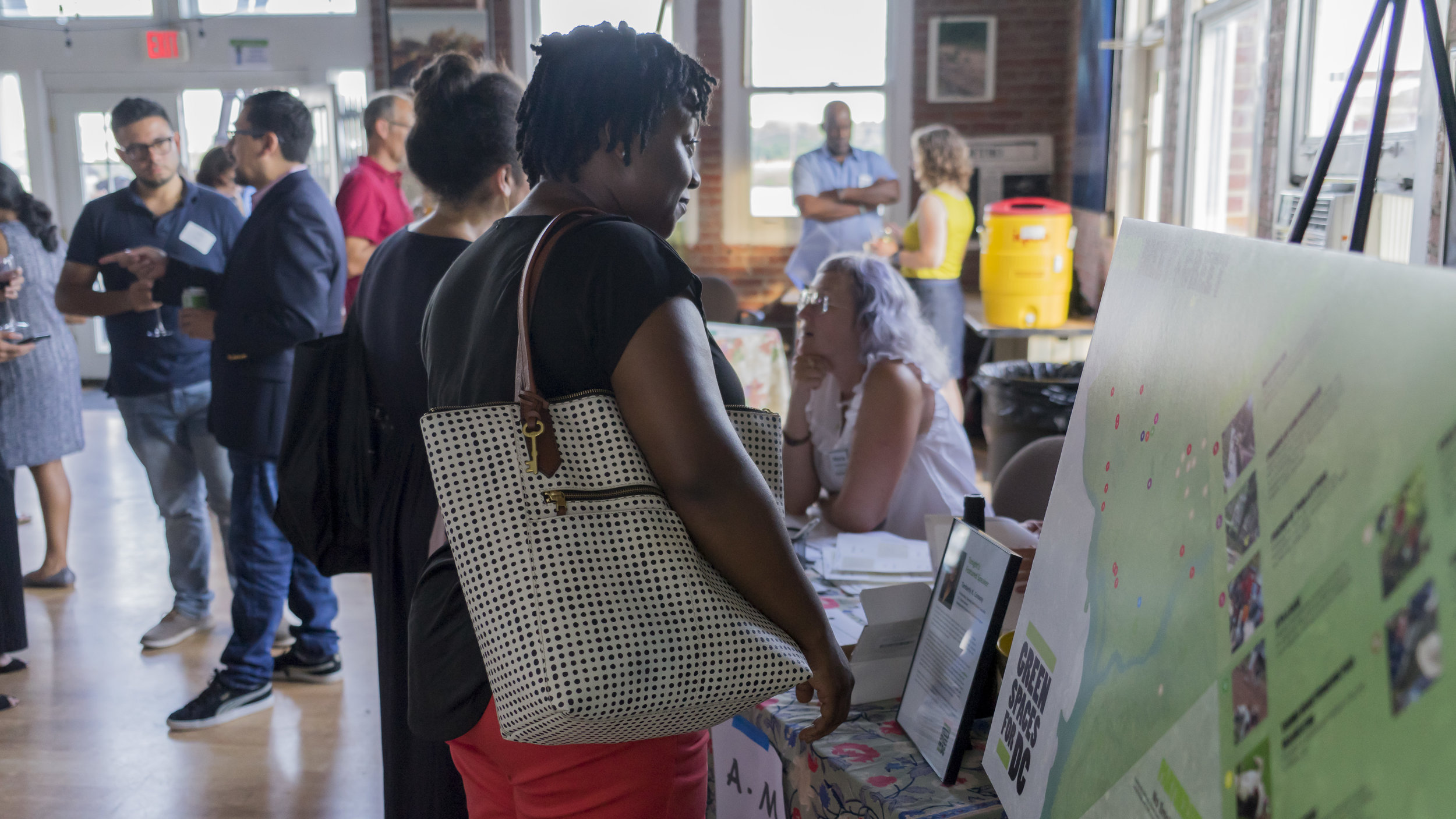

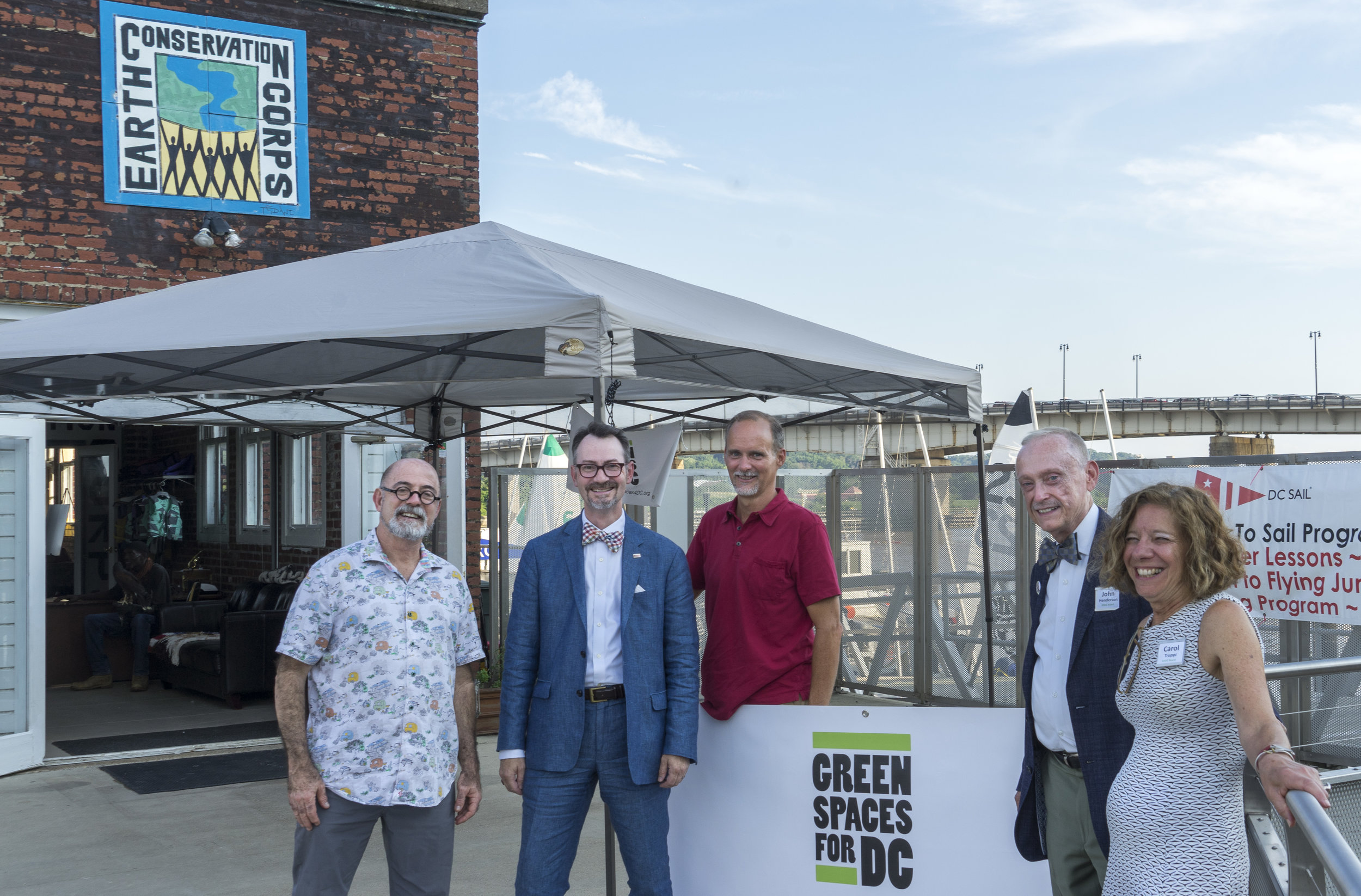
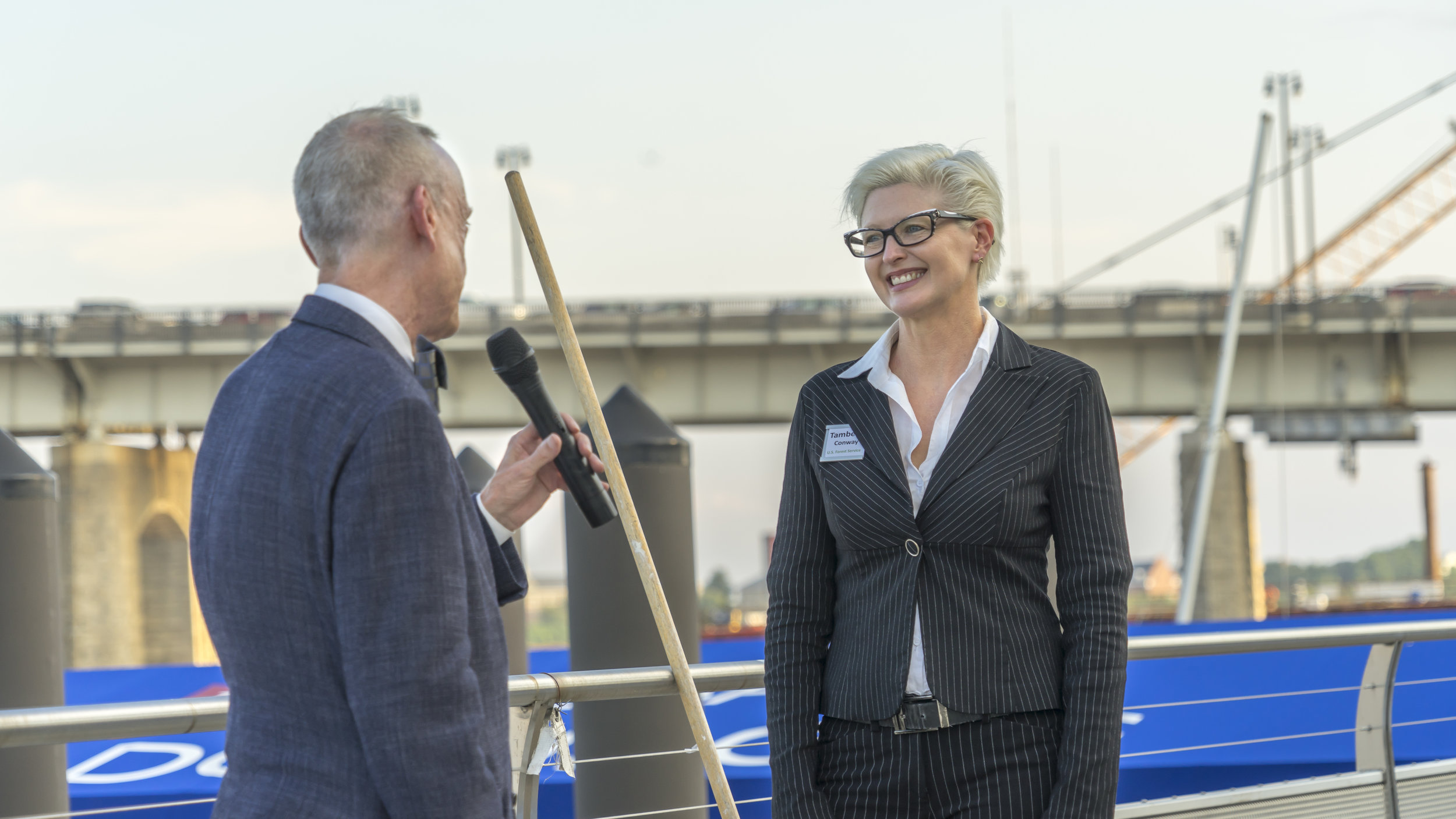

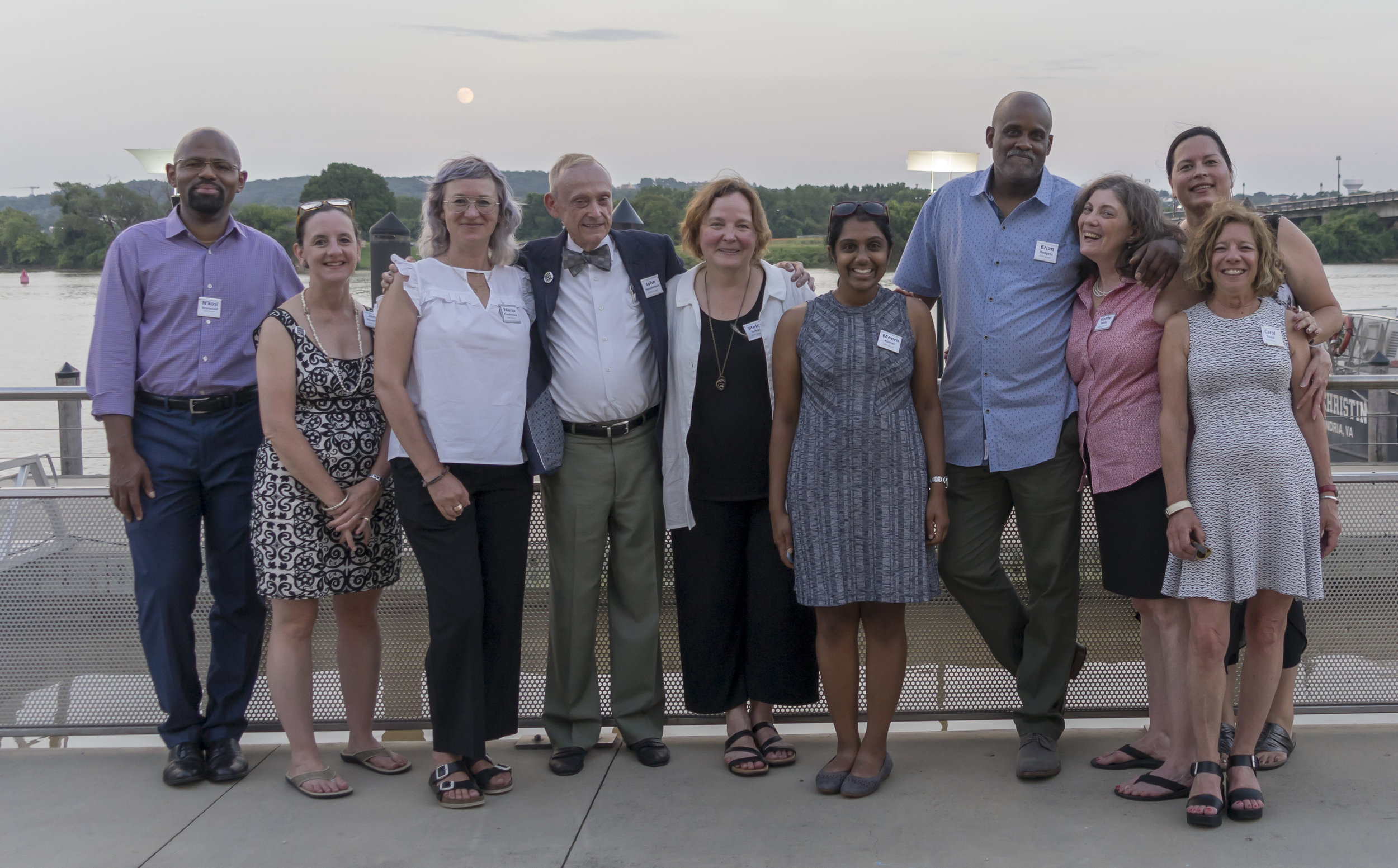
Photos by Ana Ka'ahanui
A big Thank You to everyone who battled through the chaos around Nationals Park to be with us for the 4th Annual Green Spaces for DC Meet+Greet. For those who made it, you were rewarded with good food and great conversation. We even experienced a magical sunset over Anacostia.
It was wonderful and heartwarming to connect with so many supporters of our work. Special thanks to Dr. Tamberly Conway who inspired us when she spoke about the work on broadening audiences that she is doing at the US Forest Service. Thanks to Earth Conservation Corps for providing the space; REI, Maple Restaurant, and author Melanie Choukas-Bradley for the raffle items; and Green Bee Café for the vegetarian fare.
Remember that we are an all-volunteer effort. Every penny we raise goes to support the hometown DC green spaces organizations we sponsor. If you care about what we do and have the wherewithal, please make an online donation. Thanks to all those who have already donated, we can’t survive without you.
Preservation Board Swats at Smithsonian Over Development Plans
Washington Post, April 28, 2017. DC Historic Preservation Review Board to win Historic District Designation for the Smithsonian Quadrangle Complex and the future of the Enid Haupt Garden.
Pershing Park at Risk
A post from The Cultural Landscape Foundation discusses the threat of demolishment to Pershing Park has garnered international attention.
A post from The Cultural Landscape Foundation discusses the threat of demolishment to Pershing Park has garnered international attention.
The fate of Pershing Park in Washington, D.C., which could be demolished to make way for a national World War I memorial, has garnered national—and even international—attention, which may be one reason why the unveiling of the five finalist designs scheduled for August 14, 2015, was postponed to the 19th.
GSDC Wins DDOE Training Grant
In September 2014, Green Spaced for DC was awarded a grant from the District Department of the Environment to develop and provide an innovative training program for DDOE’s RiverSmart Homes program.
In September 2014, Green Spaced for DC (GSDC) was awarded a grant from the District Department of the Environment (DDOE) to develop and provide an innovative training program for DDOE’s RiverSmart Homes program. Through a partnership with the Department of Youth Rehabilitation Services (DYRS), GSDC has trained two DYRS youth to install rain barrels at the homes of residents in the Hickey Run Watershed. The youth are also participating in environmental projects in the DC area, developing their soft skills and helping to develop a maintenance program for RiverSmart installations. This paid training program introduces them to the possibility of green careers and educational opportunities. The youth have thus far installed 39 of the proposed 100 barrels. A unique element of the grant is that GSDC is the fiduciary agent for Langdon Elementary, where the co-payments received from the residents for the rain barrels will be used to purchase school supplies and or equipment. Youth at Langdon also painted a number of the barrels that residents have had the option of selecting.
The RiverSmart program offers District residents, schools and communities incentives for reducing storm water runoff from their properties. For more information, visit the DDOE's RiverSmart page.
Join the Park Partners List Serve
In collaboration with DC Parks and Recreation, GSDC has created a Park Partners List Serve so share information and collaborate of issues of interest. Sign up and join the conversation.
In collaboration with DC Parks and Recreation, GSDC has created a Park Partners List Serve so share information and collaborate of issues of interest. Sign up and join the conversation.
Draft DC Parks and Recreation Plan Provides Opportunity for Necessary Dialogue
In March 2014 DC Department of Parks and Recreation (DPR) released “Park + Recreation: Vision Framework.” I urge you to take a look. It contains good ideas that can become a foundation for discussion and dialogue.
In March 2014 DC Department of Parks and Recreation (DPR) released “Park + Recreation: Vision Framework.” I urge you to take a look. It contains good ideas that can become a foundation for discussion and dialogue. Specifically, the plan recommendations are framed around seven elements:
- Parkland,
- Recreation Centers,
- Aquatic Facilities,
- Outdoor Facilities,
- Programs,
- Bikeways & Trails, and
- Environmental Lands & Natural Areas.
This draft plan revisits many of the ideas presented in the 2010 CapitalSpace Plan, which was a collaboration among DPR, District of Columbia Office of Planning, National Capital Planning Commission, and National Park Service.
Immediately after the kickoff of the DPR master plan project in June 2013, I wrote an article voicing skepticism about DPRs commitment to public involvement. As it turns out, my apprehensions were justified. The only public meetings held were those to kick off the project last June 15th, 17th, 18th and 20th. It appears that most of the input for the new plan came from an invited steering committee of regional park and recreation experts. It is shameful that this expert panel did not identity public participation as an essential prerequisite for a sound plan.
It is also ironic that DPR would slight face-to-face public engagement, when the Park, Recreation and Open Space element of the DC Comprehensive plan mandates “…responsiveness to the preferences and needs of the neighborhoods around the parks.” See below:
•Action 1.2 B: Public Involvement — Consult with ANCs and local community groups on park planning and development to understand and better address resident priorities.
• Policy 2.1.4: Responding to Local Preferences – Provide amenities and facilities in District parks that are responsive to the preferences and needs of the neighborhoods around the parks. Park planning should recognize there are different leisure time interests in different parts of the city. To better understand these differences, the community must be involved in key planning and design decisions.
DPR’s draft 2006 Master Plan was blunt: “Based on interviews with staff and external stakeholders, DPR is not effectively communicating with internal staff and external stakeholders. Common complaints were a lack of consistent communication by DPR with the Area Neighborhood Clusters (ANC) and neighborhood stakeholders.”
Enough said about what was not done. The new “Vision Framework” provides an opportunity to redress past deficiencies. DPR should take the draft plan on the road to every ANC to solicit comment and engage the community in dialogue on how each of the different neighborhoods can benefit from enhanced parks and green spaces. As stated in the DC Comprehensive Plan, “To better understand these differences, the community must be involved in key planning and design decisions.” Finally, these meetings must be facilitated by neutral public participation professionals that understand how to build the capacity for community members to convey their needs and desires. Just as all neighborhoods have different needs, each has a different capacity to participate.
The District has never had a parks and recreation master plan. This first plan should be an exemplar of best practices. By committing to a robust public engagement process, the District of Columbia can take a bold step toward achieving that objective.
John Henderson, President, Green Spaces for DC
GSDC Celebrates Completion of PhotoVoice Project
Through a D.C. Urban Forestry grant, funded by the U.S. Forest Service, Green Spaces for DC conducted a youth-led PhotoVoice project. The theme is “if trees could talk.” PhotoVoice engages participants using photography as a way to discuss the circumstances that the images represent as a means of personal, community, and social change.
Through a D.C. Urban Forestry grant, funded by the U.S. Forest Service, Green Spaces for DC conducted a youth-led PhotoVoice project. The theme is “if trees could talk.” PhotoVoice engages participants using photography as a way to discuss the circumstances that the images represent as a means of personal, community, and social change.
Ten young adults and ten late elementary and middle school youth are participating in this eight-week project, managed by GSDC Director, Autumn Saxton-Ross. After being taught the basics of photography and how trees are important to our environment, the youth were given a digital camera for a week to take pictures around what they have learned. When they turned in the cameras, we reviewed the pictures with them and asked why they took each picture and how it relates to the theme. It’s a process of learning how pictures can help create change.
As part of the project, a variety of speakers interact with the youth. We’ve had an engineer speak on storm water management and conduct an experiment to help the youth understand how trees and green space play a part in managing storm water. A master garden has instructed them on how to conduct tree maintenance.
Project goals:
- To create an awareness of the importance of trees in an urban environment,
- Give youth in Wards 7 and 8 opportunities to engage with members their community and to voice their perspective, and
- To show the utility of PhotoVoice as a viable method to promote urban forestry.
Join us and the youth at an end-of-program exhibit of the photographs at the District Architecture Center. We are inviting elected officials, community leaders, and neighbors to meet the youth and engage with them. We want to have the youth share their understanding of the process of change and talk to them about the issues, how policies impact trees, and what changes are needed.
Read more about this project and the views of GSDC Project Manager, Autumn Saxton-Ross.
Please join us on July 31 to celebrate the youth accomplishments and support the work of GSDC. Donations are encouraged.
DC Parks and Recreation Master Plan is Off to a Shaky Start
A master plan is the fundamental planning tool for a parks and recreation department. The DC Department of Parks and Recreation has never had a master plan to guide its decisions, although the DC Comprehensive Plan refers to a 2006 master plan that has never been publicly available.
A master plan is the fundamental planning tool for a parks and recreation department. The DC Department of Parks and Recreation (DPR) has never had a master plan to guide its decisions, although the DC Comprehensive Plan refers to a 2006 master plan that has never been publicly available. On June 11, 2013, the Department in partnership with the Office of Planning launched an initiative to create a master plan. According to the press release, “The Parks and Recreation Master Plan project team is interested in hearing residents’ ideas on the District’s overall parks system, including what is working well, areas that could use improvement, and large-scale ideas to be considered for implementation over the next ten years.”
The June 11 press release included one-week notification for the “first 3” public workshops on June 17th (Deanwood Recreation Center, 18th Judiciary Square and 20th Raymond Recreation Center. Really? Professional planners know that attendance at public meetings in the summer (i.e. Between Memorial Day and Labor Day) is not ideal and should be avoided. Also, if you are serious about public engagement, notice needs to be well-publicized at least two weeks in advance with plenty of constituent outreach. A notice of less than one-week is a patently inadequate. With this feeble start, the Office of Planning and DPR have conveyed the message that they are not interested in genuine participatory planning.
If disdain for public input wasn’t clear from the handling of the public meetings, it was from the announcement of the master plan kickoff. Once again short notice was given. The kickoff event was held on the same day and time that DPR was holding its first “Park Partners Summit.” If there is any group that should curry favor in the master planning process, it would be those organizations that have become officially designated DC park partners. Why disrespect Park Partners by forcing them to choose between the first-ever partners’ summit and the master plan kickoff?
The rationale for planning the initial three public meetings is not clear. Why was there such short notice; why only three meetings; why locate the meetings in Deanwood, Petworth and Judiciary Square; and why were these first meetings so lacking in substance?
I attended the first public meeting at the Deanwood Recreation Center, which was attended by approximately 20 residents. When questions about the short notice were asked, some in the room indicated they were given advance notice, while the meeting facilitator countered by stating that public meetings were one of several public participation tools, including a statistically valid survey and an on-line survey tool called Mind Mixer. Attendees were given business cards with a web address and encouraged to participate online. Mind Mixer does not yet have a following; none of the 19 “Great Ideas” posted apparently by the same person received more than 21 votes.
Office of Planning Director Harriet Tregoning and Parks and Recreation Director Jesús Aguirre provided generalized overviews about city growth and the changing needs for parks and recreation. There were allusions to the challenge of doing a master plan when DPR manages only 12 percent of DC parkland—even maintenance of that 12 percent is now outsourced to the Department of General Services. Mention was also made of the recent park scorecard issued by the Trust for Public Land showing DC as one of the overall best-served jurisdictions in the nation on a per capita basis, while suffering from an inequitable distribution of large useable parks.
The project consultants have done a condition assessment of 67 of 325 DPR sites and facilities. They indicate that there is no intent to complete the survey because of inadequate resources. Furthermore, the scope of the master plan is ill-defined. The PlayDC website states that the master plan will be “comprehensive,” but does not say how. Will this be an update of the CapitalSpace Plan which looks at all parks and green space in DC, including what is managed by National Park Service and DCDOT or, is this just a comprehensive look at parks and programs under the purview of DPR?
The parks, recreation and open space element of the DC Comprehensive Plan indicates that the 2006 master planning provides a detailed assessment of recreational needs in each of the District’s 39 neighborhood clusters. DPR should post the 2006 plan, and make available the planning maps for the 39 clusters. Each neighborhood can then make recommendations on how to review and update its plan.
For the master plan to be truly comprehensive the following steps must be accomplished:
- Post the 2006 Park and Recreation Master Plan including the plans for the 39 neighborhood clusters
- Map of all parks and green space in every neighborhood, regardless of management jurisdiction
- Assess the condition of all parks and recreation facilities, both DPR and NPS
- Substantively engage the public in each of the 39 neighborhoods to ascertain current needs and desires for parks and recreation facilities.
John Henderson, President
Green Spaces for DC










